The honey bee struggled, but couldn't free herself from a broadleaf milkweed blossom in our pollinator garden. Had a predator nailed her? Or was the bee dying of natural causes? What was happening?
Two hours later we returned. The bee, now in a frenzy, was still stuck. We offered her sips of honey from a coated toothpick.
"Ah, with that flight fuel, she'll take off," we thought. She did not. Closer examination revealed her foot (tarsi) stuck in a mass of sticky pollen.
We separated the bee from her floral trap by lifting her from the gluelike pollinia with the toothpick. Off went the pollinia and off went the bee.
“If you hang around that milkweed, you might be able to get a photo of a bee carrying pollinia on its foot,” Extension apiculturist (emeritus) Eric Mussen of the UC Davis Department of Entomology and Nematology told us.
So, last weekend, armed with a camera and the memory of the frenzied bee, we waited. And waited. And waited. And got it. A bee flying off chained with golden pollinia.
Unlike most flowering plants, only milkweed and orchids produce pollinia, which is a sticky packet of golden pollen grains originating from a single anther. The wishbone-shaped pollinia are in a nectar trough where insects--or parts of them--often get trapped. This is a devious way for milkweed and orchids to force insects to “take me with you” and “help us reproduce.” If you're a small insect and/or not strong enough to loosen the grip, you'll be lodged in that sticky mass and die. It's sort of like jumping into quicksand and you can't get out. Some insects manage to escape but their parts remain. That's probably one reason why you see "amputated" bumble bees, carpenter bees, honey bees and butterflies, no thanks to the Sophisticated Reproductive Habits of the Milkweed (and Orchids).
The milkweed plant is not only the larval host--and only larval host--of the monarch butterflies, but it's a nectar source for butterflies and for many other insects--including honey bees, leafcutter bees, bumble bees, carpenter bees, syrphid flies and ants.
In fact, if you look closely at a broadleaf milkweed blossom (Asclepias speciosa), you'll see dozens of tiny pink flowers forming the umbel or umbrella-shaped structure. The corona, located on top of the petals, holds a circle of five hoods and five horns. Hoods and horns pointing the way. The hoods that hold that oh-so-sweet nectar beckon insects like a kid to a candy store. Each blossom has five vertical slits which house the reproductive organs.
So, what was happening? Ms. Honey Bee, seeking nectar for her colony, hit a sweet jackpot and repositioned herself to gather it. Then her foot slipped into one of the five sticky slits and she couldn't remove her leg.
Ms. Honey Bee survived, thanks to a human being with a toothpick. Others are not so lucky.
Attached Images:
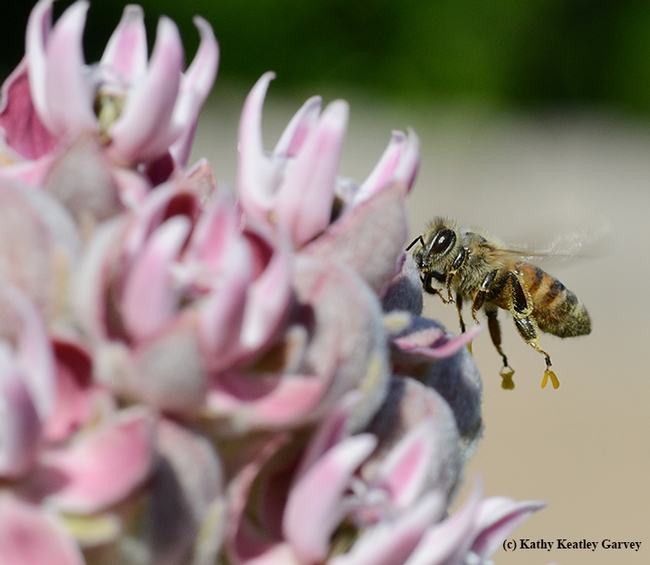
A honey bee carrying milkweed pollinia. It resembles a wishbone. (Photo by Kathy Keatley Garvey)
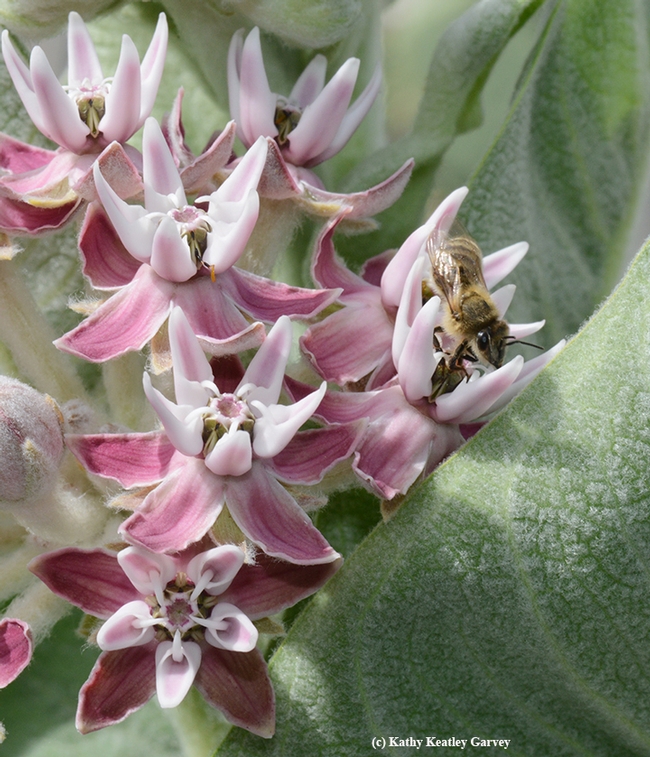
IIt's easy to get trapped in the sticky reproductive structure of a milkweed. This one was stuck for two hours.(Photo by Kathy Keatley Garvey)
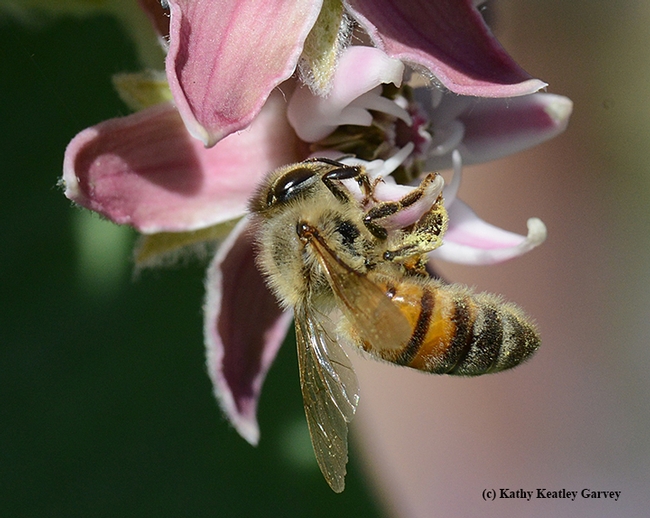
A honey bee gathering nectar on a broadleaf milkweed. (Photo by Kathy Keatley Garvey)
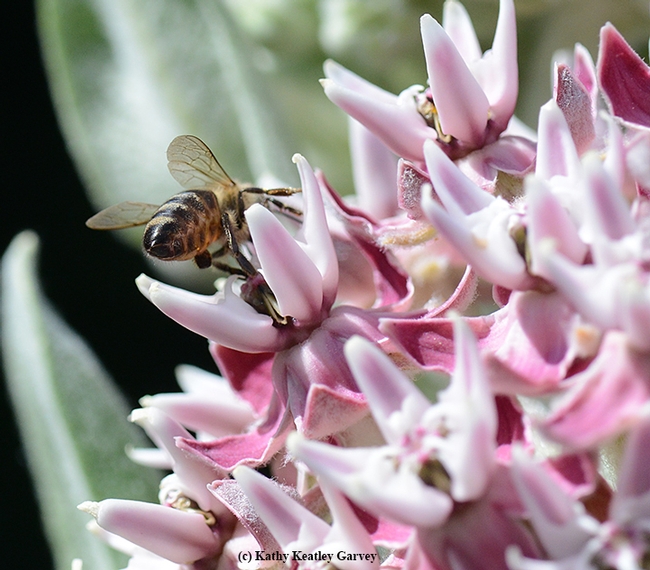
A honey bee's early morning visit to a milkweed. Note the trapped leg. (Photo by Kathy Keatley Garvey)
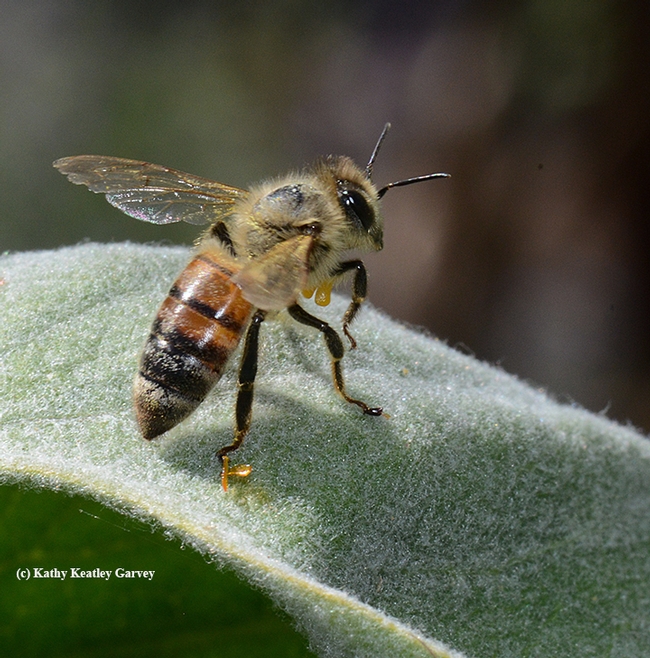
A honey bee, with milkweed pollinia attached, resting on broadleaf milkweed. (Photo by Kathy Keatley Garvey)